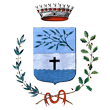La chiesa di Sant’Eufemia, la cui costruzione ebbe inizio nel 1699 per volere di don Ringhini, è parrocchiale di Vello a partire dal 1704. Per raggiungere l’edificio, che si trova in una posizione preminente rispetto all’abitato, bisogna percorrere una ripida scalinata che conduce al sagrato antistante. La facciata barocca è tripartita da un doppio ordine di paraste, tuscaniche nell’ordine inferiore e ioniche in quello superiore, con timpano triangolare sormontato da una croce. Il portale e la gradinata d’accesso sono in pietra di Sarnico mentre la cornice presenta una cimasa con volute di timpano spezzato decorato da una corona che contiene una croce e due rami di palma e sormontato da un ostensorio trilobo con volute doriche alla base e la scritta JHS. Le 24 formelle che compongono la porta lignea sono intagliate con motivi floreali. Ai lati vi sono quattro nicchie con statue in gesso dei santi Pietro, Paolo, Giovanni Battista e Luigi Gonzaga. L’interno della chiesa è ad aula unica con volta a botte, presbiterio soprelevato e abside semicircolare. Le pareti sono arricchite dalla presenza di due altari laterali coevi all’edificio mentre l’altare maggiore, con paliotto in marmi policromi, è riconducibile al XVII secolo ed è probabilmente stato trasportato dalla chiesa dei morti, prima parrocchiale di Vello. Lo stesso destino è spettato all’anta della custodia degli olii santi, una piccola tavola dipinta con Santi in gloria, riferibile a Pompeo Ghitti. La pala dell’altare, raffigurante la Madonna con il Bambino e due angeli con i santi Eufemia e Francesco d’Assisi, è stata eseguita da Ottavio Amigoni ed è datata 1642. Il dipinto, di buona fattura, presenta studiati effetti di luce e dettagli raffinati come il manto damascato della santa. Al pittore iseano Domenico Voltolini vanno invece attribuiti il Martirio di sant’Eufemia, affrescato nel catino absidale, e le due tele ai lati del presbiterio: sulla sinistra la Vergine col Bambino, santa Eufemia e le anime Purganti e a destra i Santi Antonio di Padova, Filippo, Lucia, Fermo e un santo Vescovo che propone un delizioso scorcio lacustre.
Saint Euphemia’s church, whose building started in 1699, on the order of Father Ringhini, has been Vello’s Parish Church since 1704. In order to reach the building, which is located in a dominant position over the residential area, you need to climb over steep steps leading to the parvis in front of it. The Baroque façade is divided in three sections by a double set of columns, which are of Tuscan order in the lower section while they become of Ionic order in the upper section, with triangular tympanum surmounted by a cross. The portal and the entry steps are in Sarnico stone; the frame presents a cymatium with broken tympanum, decorated by a crown containing a cross and two palm branches, surmounted by a trefoil ostensory with a Doric column at the base and the writing JHS. The 24 tiles composing the wooden door are decorated with floral motifs. At the sides, there are four niches with plaster statues of the Saints Peter, Paul, John the Baptist and Aloysius Gonzaga. Inside the church has only one room with barrel vault, elevated presbytery and semi-circular apsis. The walls are enriched by the presence of two side altars, contemporary to the building of the church, while the main altar, with a polychrome marble frontlet, may be dated to the 17th century, and it was probably transported here from the first Parish Church in Vello, the church of the dead. The door for the saint oils cupboard shares the same fate, it’s a small table painted with the Saints in glory, which has been referred to Pompeo Ghitti. The altarpiece, representing the Madonna with Child and two angles, with the Saints Euphemia and Francis of Assisi, was created by Ottavio Amigoni and it dates back to 1642. The good quality painting presents studied light effects and refined details, such as Saint Euphemia’s damask mantle. The painter from Iseo, Domenico Voltonini, painted the Martyrdom of Saint Euphemia, a fresco in the apse, and the two canvases at the sides of the presbytery: the Virgin with Child, Saint Euphemia and the Purging souls on the left and the Saints Antonio from Padua, Philip, Lucy, Firmus and a Bishop proposing a delightful glimpse of the lake.
